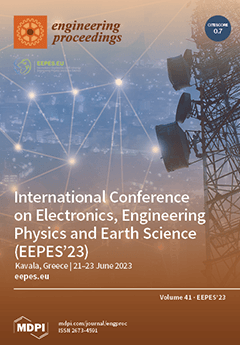Eng. Proc., 2023, EEPES'23
International Conference on Electronics, Engineering Physics and Earth Science (EEPES'23)
Kavala, Greece | 21–23 June 2023
Volume Editors:
Teodor Iliev, University of Ruse, Bulgaria
Ivaylo Stoyanov, University of Ruse, Bulgaria
Grigor Mihaylov, University of Telecommunications and Post, Bulgaria
Jacob Fantidis, International Hellenic University, Greece
- Issues are regarded as officially published after their release is announced to the table of contents alert mailing list.
- You may sign up for e-mail alerts to receive table of contents of newly released issues.
- PDF is the official format for papers published in both, html and pdf forms. To view the papers in pdf format, click on the "PDF Full-text" link, and use the free Adobe Reader to open them.




